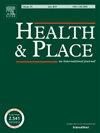‘Clean and safe’?: Swimming ethically in compromised times and polluted places
IF 4.1
2区 医学
Q1 PUBLIC, ENVIRONMENTAL & OCCUPATIONAL HEALTH
引用次数: 0
Abstract
In this article we explore emergent and enduring tensions that exist in thinking about outdoor swimming and what these can tell us about the expectations swimmers have for the possibilities in the world today and the world becoming. We will explore and describe encounters that let us see the complexities between the desire for encounters with nature, and the desire to maintain ‘clean and safe’ swimming experiences. Thinking in dialogue with Clifton Evers (2019, 2021, 2023) work on ‘polluted leisure’ and Alexis Shotwell’s (2016) concerns ‘about the evocations of purity and cleanliness’ (p.2), we are interested in how swimming spaces create barriers of access to healthy encounters by limiting the vulnerability swimmers feel in relation to various risks. Like Shotwell, we aim to challenge the privilege afforded to some groups of people to ‘perceive things how they should be, rather than how they are’ (p.7). By exploring the politics of maintaining ‘safe and clean’ swimming spaces, we aim to engage with how ‘Purity politics arise not only in our response to potential physical contamination but are also an issue for our ethical and political situation in the world’ (p.6). Maintaining purity, safety and cleanliness for ourselves and our communities of practice is an impossible task, and one that ensures we remain complicit in ongoing social and environmental injustices as well as re-producing social and cultural hierarchies related to nature, wellbeing, place, and health.
“干净安全”?:在恶劣的时代和污染的地方合乎道德地游泳
在这篇文章中,我们探讨了在思考户外游泳时出现的和持久的紧张关系,以及这些紧张关系可以告诉我们游泳者对当今世界和未来世界的可能性的期望。我们将探索和描述相遇,让我们看到与自然相遇的愿望和保持“干净和安全”的游泳体验的愿望之间的复杂性。在与Clifton Evers(2019年、2021年、2023年)关于“被污染的休闲”的研究和Alexis Shotwell(2016年)关于“纯净和清洁的唤起”的关注(第2章)的对话中,我们感兴趣的是,游泳空间如何通过限制游泳者在各种风险中感受到的脆弱性,为获得健康的接触创造障碍。像Shotwell一样,我们的目标是挑战赋予某些群体的特权,即“感知事物应该是怎样的,而不是它们是怎样的”(第7页)。通过探索保持“安全和清洁”游泳空间的政治,我们的目标是参与“纯粹政治如何产生,不仅是我们对潜在物理污染的反应,也是我们在世界上的道德和政治状况的问题”(第6页)。为我们自己和我们的实践社区保持纯净、安全和清洁是一项不可能完成的任务,这将确保我们继续参与正在进行的社会和环境不公正,并再现与自然、福祉、地点和健康相关的社会和文化等级制度。
本文章由计算机程序翻译,如有差异,请以英文原文为准。
求助全文
约1分钟内获得全文
求助全文
来源期刊

Health & Place
PUBLIC, ENVIRONMENTAL & OCCUPATIONAL HEALTH-
CiteScore
7.70
自引率
6.20%
发文量
176
审稿时长
29 days
期刊介绍:
he journal is an interdisciplinary journal dedicated to the study of all aspects of health and health care in which place or location matters.
 求助内容:
求助内容: 应助结果提醒方式:
应助结果提醒方式:


